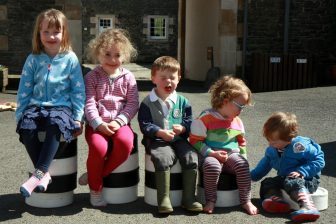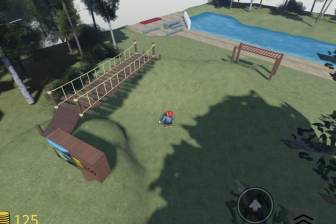
Subjectifying the child friendly city
In his keynote address to Child in the City 2016, in Ghent, social work lecturer and urbanist Sven De Visscher asked the most fundamental question of all for this movement: what is it that makes a city child friendly?
What makes a city (a town, a community) child friendly? In all our efforts to create child friendly spaces, to organise child friendly activities, or to advocate for child friendly policy agendas, we sometimes tend to overlook this fundamental question.
There are two discernible paradigms that inspire possible definitions of the child friendly city. The first paradigm is rooted in developmental psychology and seeks for an objectification of the child friendly city into universalistic guidelines for protecting children against the malicious influences of the modern world that are most prolific in cities, and to remodel the city on the child’s level. Child-friendliness appears, in this paradigm, as the outcome of professional interventions in children’s life-worlds, in the best interest of children.
The second paradigm is rooted in sociology and critical pedagogy and aims for a subjectification of the child friendly city. In a way, it responds to a flaw in the first paradigm’s reasoning: who has the right or power to determine what is in the best interests of children? The meaning of child-friendliness can be different for different social and cultural groups, and can vary over time and space.
Children as urban citizens
As a result, the child friendly city is approached as a shared learning process between children and society, and aims to promote children’s position as urban citizens. Child-friendliness is not primarily a characteristic of the outcome of professional interventions, but of the process through which these interventions get shaped. To make this idea more concrete, I suggest 5 ambitions for child-friendly cities: to recognise all children as fellow urban citizens; to offer equal chances to every child in the city; to involve children as co-researchers of the city and urban life; to connect children’s lifeworlds and the rest of the city; and to understand the child friendly city as the result of an ongoing, shared and open learning process between different urban stakeholders
These are ambitions; so not guidelines or criteria. Each of the proposed ambitions suggests an answer to the questions of what a child friendly city should contribute to, what it should try to contribute to children’s position in the city, and how it should affect their experience of living in the city.
In this way, we might arrive at a framework for assessing the child friendliness of cities (towns, communities) that is not prescriptive. This approach will not, perhaps, deliver smart strategic goals or defined measurable outcomes. It may, however, invite the development of a local, contextualised strategy for a more subjective approach to planning a child friendly city; one that will be unique to each one, reflecting the uniqueness of its community, and its children.
Sven De Visscher
Photo: Charles Pieters
The full text of Sven De Visscher’s keynote address to the Child in the City conference, Ghent, 2016, can be read here



